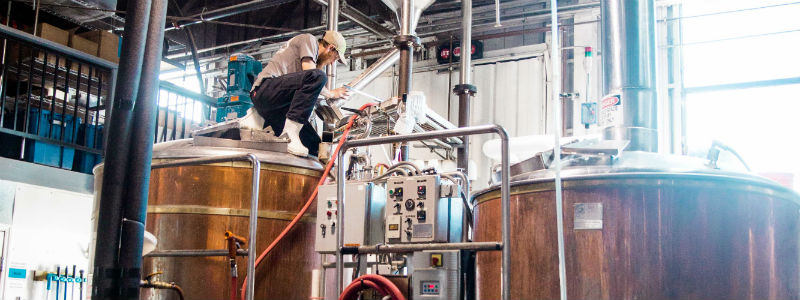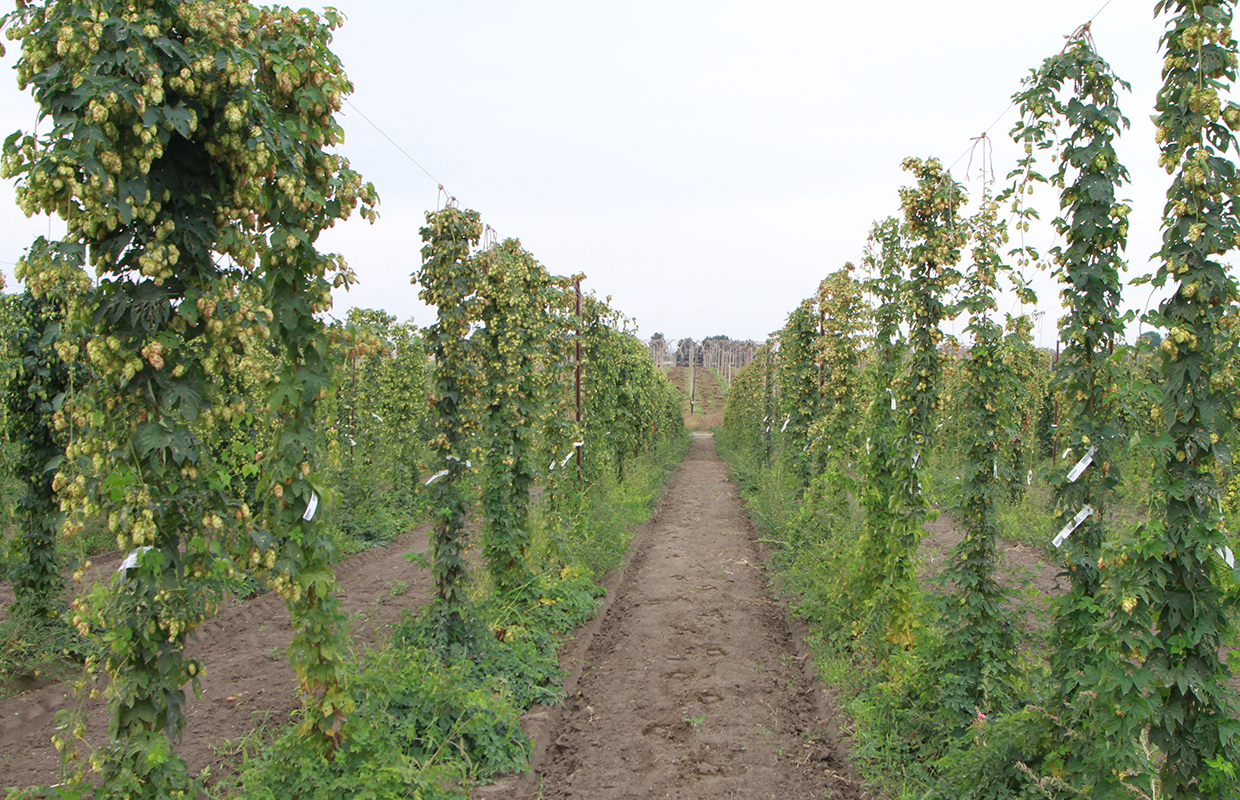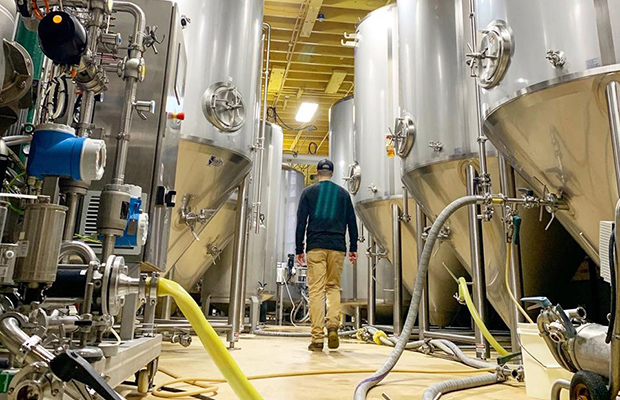
Jarrod Johnson and Ben Smith had the opportunity to go to Germany last year and visit the Weyermann malt house to try a bunch of different malts.
The head brewers for Minnesota’s Surly Brewing ended up using a new malt that the veteran maltsters brought in from the Mediterranean called Eraclea — a Pilsner malt — for Surly’s 12th anniversary beer.
“That malt … what I’ve found very interesting is that it has a very specific terroir to it from the growing conditions in the Mediterranean as well as the heritage variety of barley that they’re using,” Johnson recalled. “It made me think of the emerging craft maltsters and how over time we will have some unique regional new types of malt and that’s exciting. And I think it will keep craft beer moving forward over time.”
Although not as hyped as its fellow ingredient hops, the specialized malted barley market has grown and become more diverse with the rise of craft malting houses, both in America and overseas.
In the last three years, Michael King, the Innovation Brewer for Rogue noted that there’s been a boutique movement.
“High quality base malters are expanding with specialty, to do special things to beer,” he said. “You can add a lot of depth and complexity to beer by using specialty malts, especially with boutique malt houses.”
The biggest challenges are getting the volume a brewery like Rogue needs.
For the brand new 10 Hop IPA, King pointed out that they needed 30,000 pounds of GoldPils Vienna Malt.
“They said we were crazy,” he said. “But we worked closely with them to get it done. It can happen if you work with your malters and give them the time they need.”
At one point, Rogue Brewmaster John Maier shared that the brewery bought Mecca Grade Estate Malts malted barley from Steinbarts, a small homebrew supplier in Madras, Oregon, and brewed a beer with it, called Mecca Strata.
“I used Mecca Grade Estate Malt and Strata hops and brewed it on our smaller brewing system, what we call Mojo,” he said. “It’s good to be able to buy local for these smaller, one-off projects.”
It’s a challenge for many larger breweries to being able to work with a maltster that can provide them with the amounts of grain or specialty malts that they would need for a regular production batch. But that doesn’t mean that breweries like Surly aren’t willing to work with a local craft malting house either.
“Number one, it’s sustainable to buy malt that’s being locally produced and it supports our communities,” Smith said. “On top of that, it just gives [breweries] a lot more variety. You’re not just getting the same five malts that everyone else is getting from Breiss or Rahr or whoever else you are getting them from.
“So it creates a lot of opportunity to make new and interesting beers. We’ve been seeing that with hops for the last decade. We’ve seen all the new opportunities coming out on a large and small scale and I think it’s kind of transitioning now to a lot of the craft maltsters where you’re seeing some new old heritage variety of barley being malted.
“I think for those smaller breweries, it gives a lot of opportunities to allow them to stand out in the mix of hundreds and hundreds of new breweries coming out.”
Armin Tchami, the General Manager for Hangar 24 says that they don’t have any small malt houses in Southern California that he is aware of, but they do utilize malts from some smaller malting houses in Belgium, Germany, and the UK.
“We typically design a recipe with a particular malt in mind, whether it be an Oktoberfest-inspired beer that utilizes all German ingredients, or our Sour Brown that utilizes English Marris Otter as the base malt,” he explained.
Karl Schultz of Third Street Brewhouse in Minnesota has been seeing some great small malt houses opening up in the Minnesota region, and there are new, larger suppliers that are becoming available all the time.
“They’re producing new malts, but what we’ve seen is pretty similar to malts that have been in the market for some time,” he explained. “In the past, we’ve run into a couple of instances where our suppliers didn’t have the malt we needed in stock, so we had to place a special order. We’ve found that as long as we give them a heads up, it usually isn’t an issue. It pays to plan ahead in this business.”
Determining a rigid specification for a certain brew and helping adjust year-to-year, be it specialty malts or even the latest batch of two-row, can be critical to a brewery that is looking to stick to a consistency that consumers will come to know in the brand.
“It’s rare, but if needed, we can update the malt bill to maintain the same color specs,” Tchami said.
“We review malt analyses provided by the maltster to ensure we’re covered.”
Adjusting color is one thing, manipulating taste is another and tasting the malt coming in is a key.
Tchami says the Hangar 24 crew typically tastes a new crop of malt as they receive it. It’s as simple as grabbing a small handful and chewing on it.
“We’re checking for the expected flavor profile, appearance, and friability,” he said.
Sometimes those types of taste tests inspire Schultz to develop something new. Other times, they might find the perfect malt for an idea the Third Street Brewhouse team already got in the hopper.
“When that happens, we’ll put our heads together and develop a recipe for a 10-gallon pilot brew,” he explained.
But for Smith and Johnson, the biggest part is sensory.
“We’re tasting the malt itself, eating the malted barley,” Smith said. “If we’re visiting the malster, a lot of times they’ll have a beer that they’ve produced or someone locally produced that’s featuring that malt which is always a pleasure.”
If the brewers have time and the opportunity to do a pilot batch on a small system, or use it in a beer that they know express that malt with relatively little risk then they cantry it there as well.
“It kind of depends on the malt and the situation and if it’s a different kind of base malt versus a crystal or a roasted malt,” Smith noted. “And then of course, we’ll get the spec sheets of the malt from the maltster, which is a big deal.”
King said that Rogue will brew with the new malts and test what comes through.
“I then analyze the clarity, cost-effectiveness, quality, and [see] if it will work in our brewhouse,” he said.
It’s mostly sensory based, noted Smith, who said Surly’s lab will end up doing a lot more up-front analytical stuff.
There’s a lot more variety, and a lot more opportunity for all brewers. The biggest challenge now is just scale for larger breweries.
“We need to make sure we can lock in enough supply if we’re going to start a new brand or launch a new beer we’ve got to be able to confirm that we can get enough malt to keep making it,” Smith said.
“The biggest challenge I think it’s just supply chain, making sure we can forecast out far enough with our suppliers to have those on hand.”




2 Trackbacks / Pingbacks